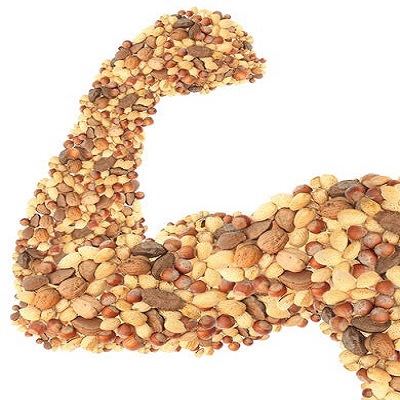What is protein? How much protein should I eat? How do I know how much protein is in my food? Which food has the best protein? I’m bored of eating chicken! Ok, well lets give you some alternative tasty protein rich foods to try!
What is protein? Protein is an essential building block in our body that is responsible for helping repair, maintain and build skin, bone, hair, nails and most importantly here, muscle.
Proteins are made up of 20 amino acids. 8 of these are ESSENTIAL in an adult diet – meaning we can’t produce them ourselves so have to get them from our food. (There are 9 essential for children, but that’s too much info for now)… For the purpose of this blog, we are concentrating on adult protein intake and how to get enough when training to support and repair muscle.
In fact a good thing to point out here is:
*EATING MORE PROTEIN WILL NOT GIVE YOU MORE MUSCLE*
*HOWEVER THE LEVEL AND INTENSITY OF YOUR TRAINING WILL DETERMINE HOW MUCH PROTEIN YOUR BODY NEEDS*
Makes sense right?
Food protein sources are categorised in 2 levels:
COMPLETE (ie contain all 8 amino acids) | INCOMPLETE (ie contain less than all 8)
These 2 categories usually fall into 2 food groups:
Animal proteins = complete | Plant proteins = incomplete
This doesn’t mean if you only eat plant proteins you won’t get all the essential amino acids you require, just that you should probably make sure you eat a good variety of them so one source can make up where another is lacking.
Are you still with me?
So how much protein should we have? How do we know how much is in our food? What about when training….? We will get to that, but for now (and the main reason this post was generated), here are my personal favourite high protein foods to add into the mix if you’re finding the chicken and lentil diet is getting a bit bland!
High Protein Foods to try:
1) EGGS
They actually have all 20 amino acids not just the 8 essentials, they are protein boss
2) CHIA SEEDS
Plant based, but have all 8 essential amino acids and honestly I cant recommend them enough, they go in everything and they fill me up – and you know that’s saying something! I use chiabia in smoothies, porridge, with granola and cereals, I make chia puddings, add them to overnight oats, they go in my energy bites, on salad, in with veggie ratatouille and with scrambled eggs – everything!
3) QUINOA
Its also plant based with all essential amino acids though. Bland, yes, boring, yes – it literally needs spicing up but do that and you’re all good.
Other high protein recommendations (aside from meats and fish and in no particular order):
4) HEMP
Milk, milled seeds etc check Good Hemp Food. Love their hemp milk in coffee – so creamy
5) BLACK BEANS
Known to be a bit more easily digestible than some other high protein beans
6) CHICKPEAS
Cos we all love hummus right?
7) SUNFLOWER SEEDS
8) PUMPKIN SEEDS
9) ALMONDS
And other NUTS and NUT BUTTERS including of course PEANUT BUTTER!
10) SEAFOOD
(Tuna), lobster (I wish I could afford it!), scallops, muscles ….
11) Be careful with too many soy products but EDAMAME BEANS fresh from the pods, in a stir fry on a salad are high protein, filling and refreshing (especially with mint too)
More high protein veggies:
12) PEAS
Yes the simple green pea is quite a high protein source
13) BROCCOLI
14) ASPARAGUS
15) KALE
16) SPROUTS
Don’t forget the dairy:
17) CHEESE (YESSSSS!!!!)
Keeping it low fat COTTAGE CHEESE is great and versatile
18) YOGHURT
Be careful to find a high protein natural yoghurt and not one full of added sugars though!
And don’t forget the wild card….. 19) BUGS are really high in protein! In facts INSECTS for their size are perhaps the most nutritionally dense source of protein out there. Although for now, I know I’d rather stick to the peanut butter….
How do you calculate how much protein you actually need? There will be a lovely graphic in the Newsletter with calculations for you – just pop your email address in HERE and I will make sure you get that.
How do I know how much is in my food? Well the easiest way is to literally Google – that is if you are using fresh ingredients.
**REMEMBER to look at the amounts you are eating the foods in though. Google tends to give you 100g worth across the board, but if you’re eating 100g of chicken that’s gonna be a very different portion size than a 100g sunflower seeds for example**
I’ve got you all a chart of everyday foods and their protein content which will also be on the newsletter HERE but you can ask Google for anything else.
What about just looking at the label? Yes you can of course read your food label for its protein content, BUT it’s not as simple as you would think. Unfortunately. Don’t panic, we’ve popped a little guide in the newsletter for you too. You can sign up HERE.
AND FINALLY: Want some protein packed recipes? Check our Instagram for ALL our recipes, the best ones will be on Facebook and in the Newsletter highlights too.
For more info / services / questions you can contact me anytime on info@nitakothari.com


